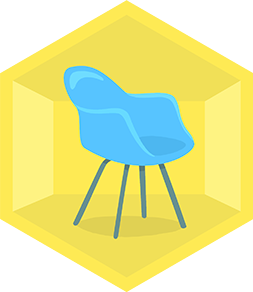Improve Accessibility with Design
Design and build a small accessible room or playground model using cardboard, ramps, tactile paths, and clear signs to learn inclusive design.



Step-by-step guide to Improve Accessibility with Design
Accessible Web Design: What Is It & How To Do It
Step 1
Imagine the accessible room or playground and draw a simple top-down sketch showing where ramps doors play zones tactile paths and signs will go.
Step 2
Use your ruler and pencil to measure and mark a cardboard base about the size you want for your model.
Step 3
Cut out the cardboard base using scissors and ask an adult for help if a craft knife is needed.
Step 4
Cut cardboard pieces for walls or fences to separate rooms or play areas.
Step 5
Attach the walls or fences to the base with glue or tape where you marked them.
Step 6
Cut a rectangle of cardboard to make a ramp piece for an entry or play platform.
Step 7
Bend or shape the ramp piece to create a slope and attach it to the base with glue or tape so it reaches the platform cleanly.
Step 8
Cut strips of textured materials and glue them to the floor to make tactile paths for people who use touch to navigate.
Step 9
Cut small signs from cardboard and use coloring materials to draw clear symbols and words for doors ramps and important areas.
Step 10
Build simple benches or play features using popsicle sticks or extra cardboard and attach them to your model.
Step 11
Test your ramps and paths by rolling a toy wheelchair or moving a toy figure through the space and adjust anything that blocks smooth movement.
Step 12
Decorate any final details and then share a photo and a short description of your finished accessible room or playground on DIY.org
Final steps
You're almost there! Complete all the steps, bring your creation to life, post it, and conquer the challenge!


Help!?
What can I use instead of cardboard, popsicle sticks, or textured materials if those are hard to find?
Use a sturdy shoebox lid or foam board for the base and ramps, fold or layer cereal boxes for walls, coffee stirrers or cut cardboard strips instead of popsicle sticks, and felt, sandpaper, or fabric strips for the tactile paths while masking tape can substitute for glue.
My ramp is too steep or the toy wheelchair gets stuck—how can I fix it?
Make the ramp shallower by lengthening the cardboard ramp or adding support wedges under it, smooth or trim any rough edges, and secure the ramp firmly with extra glue or tape before retesting with the toy wheelchair.
How can I adapt the project for younger kids, older kids, or kids with different abilities?
For younger children, pre-measure and pre-cut the cardboard base and larger pieces and let them glue and decorate, for older kids have them draft the measured top-down sketch with a ruler and calculate ramp slopes, and for kids with fine-motor challenges use larger textured strips, Velcro instead of glue, and bigger signs to place.
How can we make the model more realistic or personal before sharing it on DIY.org?
Add Braille-like bumps with puff paint on the tactile paths, create removable modular walls to test different layouts, draw clear symbols on the small cardboard signs with coloring materials, and photograph the top-down model with a short description of your accessibility choices to post on DIY.org.
Watch videos on how to Improve Accessibility with Design
Learn Accessibility - Full a11y Tutorial
Facts about inclusive design and accessibility
↗️ A common wheelchair ramp guideline is 1:12 — for every 1 inch of rise, plan about 12 inches (1 foot) of ramp length.
♿ Universal design is guided by 7 principles that help make spaces usable by as many people as possible.
📦 Cardboard is lightweight, easy to cut, and recyclable, making it perfect for quick scale models and prototypes.
🪧 Clear signs use high contrast, large fonts, and simple symbols so everyone can read them quickly and easily.
🧑🦯 Tactile paving was invented in 1965 in Japan by Seiichi Miyake to help people who are blind or have low vision navigate safely.
How do I guide my child to design and build a small accessible room or playground model?
What materials do we need to build a small accessible room or playground model?
What ages is this accessibility design activity suitable for?
What are the benefits of making a small accessible room or playground model with my child?


One subscription, many ways to play and learn.
Only $6.99 after trial. No credit card required



